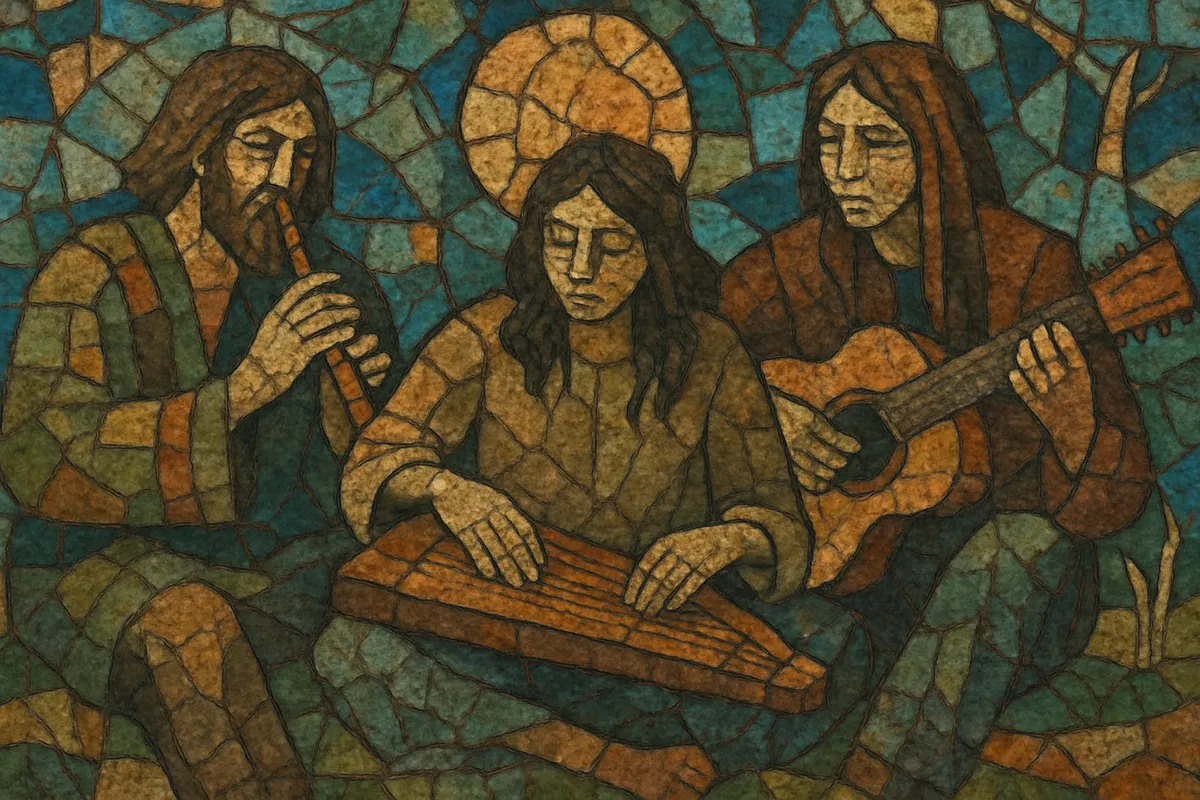
Free folk is an experimental, improvisation-forward branch of contemporary folk that treats traditional instruments and song forms as raw material for open-ended exploration.
It favors drones, modal vamps, extended techniques, field recordings, and communal, loosely conducted ensemble playing over verse–chorus structure. The sound often sits between rustic acoustic textures and noise/ambient soundscapes, with a strong DIY, lo‑fi recording ethos (4‑tracks, cassettes, room mics). While it overlaps with psychedelic and “freak” folk, free folk is typically less song-centric and more concerned with process, spontaneity, and timbral ritual.
Aesthetically, it draws on American primitive guitar tunings, non-Western modalities, free improvisation, and the psychedelic/underground tape scene to create hypnotic, nature-attuned music that can feel both intimate and otherworldly.
Free folk coalesced in the United States underground as musicians influenced by 1960s/70s psychedelic folk, American primitive guitar, and free improvisation began to privilege process over songs. Informal collectives and loose ensembles (often recording to cassette and 4‑track) emerged in scenes around New York and New England (e.g., the No‑Neck Blues Band orbit, Sunburned Hand of the Man) and the West Coast/Jewelled Antler milieu, blending hand percussion, harmonium, strings, and found objects into long, modal jams and drones.
The term gained visibility alongside the "New Weird America" tag popularized in the early 2000s, which gathered disparate psych/folk experimenters under a shared DIY sensibility. Labels and distros such as VHF, Eclipse, Ecstatic Peace!, and many microlabels circulated limited CDRs and tapes, fostering a cottage network of tours and house shows. Parallel scenes in Finland (Fonal Records; Avarus, Kemialliset Ystävät, Islaja, Lau Nau) and the UK (Vibracathedral Orchestra, related collectives) mirrored the approach, emphasizing communal improvisation, ritualistic repetition, and lo‑fi documentation.
Musicians emphasized open tunings, modal drones (often Dorian/Mixolydian or raga‑tinged), free‑time pulses, and extended techniques on acoustic instruments (bowed guitars, prepared strings, breathy flutes), intertwined with environmental recordings. Performances were frequently non-hierarchical, with cueing by gesture rather than fixed charts, yielding pieces that felt simultaneously ancient and avant-garde.
Free folk’s ethos—DIY distribution, cassette culture, site-specific recordings, and process-first composition—fed into ambient folk, lo‑fi experimental scenes on Bandcamp, and parts of indie folk’s textural palette. While the most visible wave receded, its practices persist in cross-genre collaborations (drone/psych, sound art, experimental Americana) and continue to inform small-press labels and communal improvisation practices worldwide.
-
•
Choose a mode, tempo feel (or free) and a drone source.
•Establish a simple motif on open‑tuned guitar/banjo.
•Layer auxiliary instruments (fiddle, flutes, harmonium) in call‑and‑response.
•Introduce field recordings for place and depth.
•Shape a dynamic arc: quiet entrance → dense midpoint → sparse resolution.
•Print to cassette/4‑track or a single stereo take to preserve immediacy.

